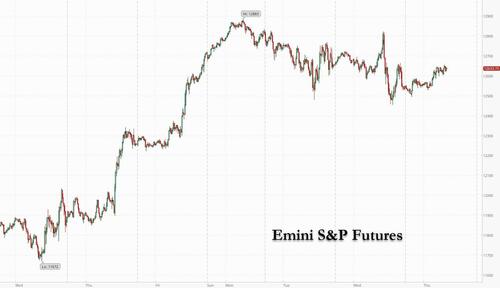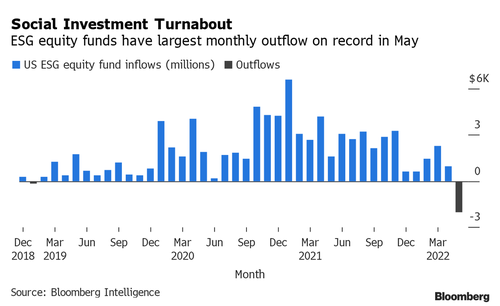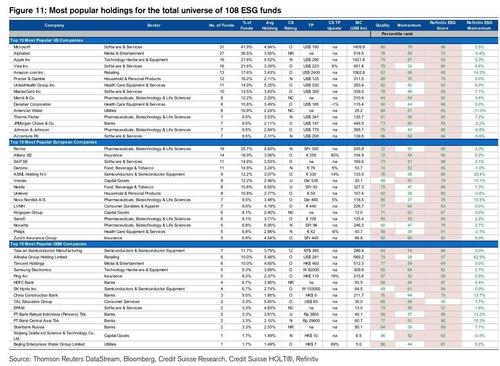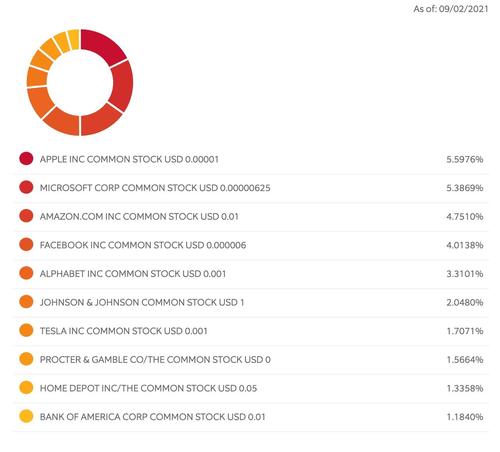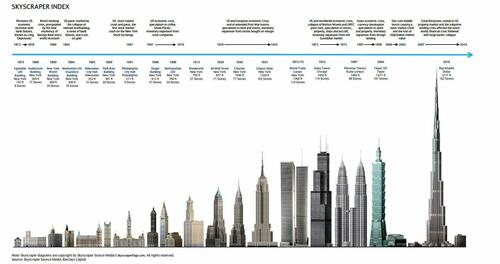Futures Rise For The First Time This Week As Oil Slumps
US futures advanced for the first time this week, as investors tentatively bought the dip and were cheered by a drop in oil prices. S&P 500 futures were 0.6% higher by 7:30 am in New York, while Nasdaq 100 futs gained 0.7%. Already light trading volumes are even lower, with UK markets shut for a long weekend holiday to mark Queen Elizabeth II’s Platinum Jubilee. Stocks slumped Wednesday after JPMorgan CEO Jamie Dimon’s warning to investors to prepare for an economic “hurricane”, reversing his cheerful comments from just one week earlier, and disagreeing with JPMorgan’s permabullish strategist, Marko Kolanovic, who expects stocks to rebound by the end of the year and the US to avoid recession. Treasuries held losses, with 10-year yields above 2.90%. The dollar slipped while the yen held near 130 per dollar after its recent decline on the prospect of widening interest rate differentials with the US.
Oil dropped on a rehashed report – this time from the FT which echoed an almost verbatim report from the WSJ one day earlier – that Saudi Arabia could pump more crude should Russian output drop substantially due to increasing sanctions over its invasion of Ukraine. It could, of course, but it won’t for various reasons we will discuss in a post shortly. In any case, OPEC+ meeting members are set to meet Thursday for their monthly gathering where no break up of OPEC+ is going to happen.
It seems that #OPEC+ will continue its current policy of monthly increases until September, after which, depending on the market conditions, production limits will be lifted.
In any case, we expect to see another lackluster meeting, as in previous months./3 #OOTT— Reza Zandi (@R_Zandi) June 2, 2022
Oil’s decline helped to steady sentiment after US manufacturing activity and job openings data Wednesday fueled concern the Federal Reserve will need to get more restrictive to slow runaway price gains.
“There’s been a large correction in some stocks; those corrections led to valuations that are way more attractive that can benefit medium-to long-term investors, especially in Europe and the emerging-markets space,” Vanguard Asset Services Ltd. Investment Strategist Giulio Renzi Ricci said on Bloomberg TV, summarizing prevailing sentiment among the BTFD crowd.
In premarket trading, bank stocks are higher as the US 10-year Treasury yield rises for a third straight day to about 2.91%. Elsewhere, Repare Therapeutics will be in focus as shares soared 20% in postmarket after it announced a worldwide license and collaboration agreement with Roche for Camonsertib, while GameStop reported mixed results in the first quarter as it shifts to cryptocurrencies and non-fungible tokens. In corporate news, tech-bloated hedge fund Tiger Global Management’s losses for the year reached 51.8% amid turbulent markets. Here are some other notable premarket movers:
- Hewlett Packard Enterprise (HPE US) drops as much as 8.1% in US premarket trading on Thursday after the computer hardware and storage company lowered its adjusted earnings per share forecast for the full year.
- Chewy (CHWY US) shares are up 16% in pre- market trading after the online pet products retailer reported quarterly adjusted Ebitda and net sales that topped analysts’ expectations. Jefferies called the results “impressive.”
- NetApp Inc. (NTAP US) shares gained in extended trading Wednesday. Analysts remain cautious about the outlook for the cloud business after the storage hardware and software company reported adjusted fourth-quarter earnings that were higher than analysts’ expectations.
- C3.ai Inc. (AI US) tumbled 22% postmarket after the AI software company forecast revenue for fiscal 2023 that fell short of estimates. Piper Sandler’s analyst Arvind Ramnani cut his recommendation to neutral from overweight.
- Veeva (VEEV US)shares advanced 4.2% in postmarket trading Wednesday as it lifted its revenue forecast for the full year.
Investors have been on edge over when (not whether) the US central bank’s tighter policies will induce a recession. A chorus of Fed officials has fallen behind calls to keep hiking to counter price pressures. Mary Daly of the San Francisco Fed and her more hawkish colleague James Bullard of St. Louis both backed a plan to raise rates by 50 basis points this month, while Richmond’s Thomas Barkin said it made “perfect sense” to tighten policy.
“We do see the rise in probability of a recession in the second half of this year, potentially persisting into 2023 as the Fed continues to battle inflation,” Tracie McMillion, Wells Fargo Investment Institute head of global asset allocation strategy, said on Bloomberg Television.
In Europe, the Stoxx 600 Index advanced amid low session volumes with the London market closed in commemoration of the Queen’s Jubilee festivities. Here are some of the biggest European movers today:
- Remy Cointreau shares advance as much as 5.6% after the spirits company reported FY earnings that Morgan Stanley called “reassuring.” Peer Pernod Ricard also climb, as much as 3.1%.
- Calliditas Therapeutics rise as much as 16% after Pareto Securities initiated with a buy recommendation, calling the Swedish biotechnology firm “highly undervalued” and a potential acquisition target.
- European energy stocks underperformed as oil slipped following a report that Saudi Arabia is ready to pump more should Russian output decline substantially.
Earlier in the session, Asian markets were dragged lower by the technology sector, as strong US economic data bolstered the case for aggressive interest-rate hikes by the Federal Reserve. The MSCI Asia Pacific Index dropped as much as 1.2% as most sectors fell, with tech shares including TSMC and Alibaba among the biggest drags. South Korea led declines in the region as traders returned from a holiday, while China stocks eked out gains after authorities urged banks to set up a 800 billion yuan ($120 billion) line of credit for infrastructure projects. An unexpected advance in US manufacturing activity and still-high job openings added to investor concerns about monetary tightening in the country and its impact on global growth. James Bullard of the St. Louis Fed urged policy makers to raise interest rates to 3.5% this year to try and curb inflation. The US policy outlook adds to pressure on Asian firms, whose earnings prospects have dimmed on higher costs and China’s economic slowdown. The MSCI regional benchmark is down 13% this year, largely tracking the S&P 500’s 14% loss.
“We do think near term it’s likely to be bumpy,” Sunil Koul, Apac equity strategist at Goldman Sachs, told Bloomberg Television. “This combination of quantitative tightening, raising rates, combined with some growth risks we are seeing and a stronger dollar is what is causing pain in the markets.”
Japanese stocks fell as the persistent risk of global inflation and the prospects of tighter monetary policy in the US damped sentiment. The Topix closed 0.6% lower at 1,926.39 at the 3pm close in Tokyo, while the Nikkei 225 declined 0.2% to 27,413.88. Sony Group contributed the most to the Topix’s decline, decreasing 3.2%. Out of 2,171 shares in the index, 675 rose and 1,402 fell, while 94 were unchanged. “There are still worries over inflation in the US and rate hikes, so it will be quite hard for stocks to enter an upward trend,” said Hitoshi Asaoka, a senior strategist at Asset Management One.
Stocks in India overcame concerns over hawkish central bank moves to snap two days of declines as a drop in oil prices and attractive valuations buoyed investors. The S&P BSE Sensex rose 0.8% to 55,818.11 in Mumbai, while the NSE Nifty 50 Index advanced 0.6%. Reliance Industries provided the biggest boost to the key gauges, surging 3.5%, followed by software majors Infosys and Tata Consultancy Services. Of the 30 member stocks on the Sensex, 20 rose, while 10 declined. All but four of the 19 sectoral indexes compiled by BSE Ltd., rose, led by a measure of energy companies. Stocks in Asia were mostly lower after strong US economic data bolstered the case for aggressive interest-rate hikes by the Federal Reserve. However, the trend soon changed as investors assessed attractive valuations, while crude oil slid to $113 a barrel before the monthly OPEC+ meeting later today. “Nifty valuations are now at a sweet spot where they offer good potential returns,” DSP Mutual Fund said in note. About half of the NSE Nifty 500 Index’s members have corrected more than 30%, which creates selective opportunities, the asset manager said.
In Australia, the S&P/ASX 200 index fell 0.8% to close at 7,175.90, following US shares lower after Fed officials reinforced a hawkish stance and JPMorgan’s Jamie Dimon cautioned on the economy. Megaport led a drop in technology shares. Woodside was the top performer after a block trade. In New Zealand, the S&P/NZX 50 index fell 0.2% to 11,349.54.
In FX, the Bloomberg Dollar spot Index fell as the greenback traded weaker against all of its Group-of-10 peers. The euro snapped two days of losses and approached $1.07. One-week options in euro-dollar now capture the next ECB meeting, and implied volatility in the euro heads for its strongest close since mid-May. The pound retraced about half of Wednesday’s loss, with UK markets shut for a holiday. Australia’s bonds dropped amid speculation that the Reserve Bank of Australia will follow its Canadian counterpart and keep raising rates aggressively. The yen fell to a three-week low before reversing losses.
US Treasuries were flat in early US trading as equity futures rose for the first time this week. The 10Y Yield is trading unch at 2.91%, outperforming most euro-zone counterparts, with 2- to 5-year yields cheaper by 1bp-2bp with 10- to 30-year yields little changed, flattening 5s30s by ~2bp. IG dollar issuance slate empty so far; nine borrowers priced $14.6b Wednesday, largest daily total since May 17. European bonds posted modest losses after a steady start.
As noted above, crude oil slid on a report that Saudi Arabia is ready to pump more oil if Russian output declines. OPEC+ is scheduled to meet to discuss supply policy, where it is not expected to surprise anyone. At last check, Brent was trading just above $113, and although the benchmark lifted around $1/bbl off of its overnight troughs, this has marginally pulled back.
Looking at the day ahead, the economic data slate includes May Challenger job cuts (7:30am), ADP employment change (8:15am), 1Q final nonfarm productivity and initial jobless claims (8:30am) and April factory orders (10am). Fed speakers slated include Logan (12pm) and Mester (1pm).
Market Snapshot
- S&P 500 futures up 0.5%
- STOXX Europe 600 up 0.5%
- MXAP down 0.7% to 167.84
- MXAPJ down 0.8% to 552.13
- Nikkei down 0.2% to 27,413.88
- Topix down 0.6% to 1,926.39
- Hang Seng Index down 1.0% to 21,082.13
- Shanghai Composite up 0.4% to 3,195.46
- Sensex up 0.8% to 55,825.08
- Australia S&P/ASX 200 down 0.8% to 7,175.94
- Kospi down 1.0% to 2,658.99
- German 10Y yield up 2bps to 1.21%
- Euro up 0.4% to $1.0689
- Brent futures down 2.3% to $113.65/bbl
- Gold spot up 0.3% to $1,851.88
- U.S. Dollar Index down 0.3% to 102.23
Top Overnight News
- President Joe Biden is likely to visit Saudi Arabia later this month as part of an international trip for NATO and Group of Seven meetings, according to people familiar with the matter, with record high US gas prices weighing on his party’s political prospects
- The ECB must pare back stimulus as inflation is too strong and too broad, Governing Council member Francois Villeroy de Galhau said
- EU efforts to approve a partial ban on Russian oil imports hit an obstacle after Hungary raised new or already rejected demands, further slowing a push to clinch a deal, according to people familiar with the negotiations
- The pound is coming off the first positive month of 2022, but the mood in the market is as bleak as ever. Scorching inflation, an economy teetering on the edge of recession and a scandal-prone government are feeding into a view that the UK currency is vulnerable
- After years of pushing exports to China and building up energy links to Russia, Germany’s economy faces a poisonous cocktail of risks. Its heavy reliance on manufacturing makes it more vulnerable than European peers to war-related disruptions in Russian energy supplies and bottlenecks in trade. The upshot is risk of contraction and even higher prices squeezing unsettled consumers
- Beijing is turning to state-owned policy banks once again to help rescue an economy under strain, ordering them to provide 800 billion yuan ($120 billion) in funding for infrastructure projects
- Chinese officials have vowed to carry out a slew of government policies to stimulate growth following Premier Li Keqiang’s recent call to avoid a Covid- fueled economic contraction this quarter
A more detailed look at global markets courtesy of Newsquawk
Asia-Pac stocks followed suit to the subdued performance seen in global peers after the recent upside in yields and hawkish central bank rhetoric. ASX 200 was dragged lower by underperformance in tech and weakness in financials, with sentiment also not helped by frictions with China. Nikkei 225 lacked firm direction with automakers indecisive following sharp declines in their US sales last month. Hang Seng and Shanghai Comp traded mixed ahead of the Dragon Boast Festival tomorrow and with Hong Kong suffering from notable losses in property names and tech, while losses in the mainland were pared amid COVID-related optimism and after the latest support efforts in which Beijing announced CNY 800bln of increased credit quotas for state-owned policy banks to fund the construction of infrastructure projects.
Top Asian News
- China’s Ambassador to Australia said that Beijing is prepared to talk with Australia without preconditions but added that trade sanctions on Australia will not be removed until there is an improvement in the political relationship, according to AFR.
- China’s Global Times tweeted that Chinese Coast Guard vessels patrolled the territorial waters off the Diaoyu Islands (Senkaku Islands) on Thursday, which is a disputed territory with Japan.
- Japan’s Chief Cabinet Secretary Matsuno confirmed that the government wants to increase the average minimum wage to JPY 1000, according to Reuters.
- China’s Commerce Ministry, on the US considering adding additional firms to the blacklist, says they will adopt measures to protect Chinese firms.
- A group of nations are to make a request for an international labour organisation mission to China to probe alleged violation in Xinjiang at a meeting today, according to Reuters sources.
- Chinese Officials Vow to Carry Out Plans for Economic Stimulus
- Toshiba Reveals Buyout Bids as Privatization Chances Rise
- Hong Kong Quarantine Backtrack Stokes Fears of Covid Zero Return
European bourses are posting modest gains, Euro Stoxx 50 +0.6%, though volumes are lighter given UK Spring Bank Holiday. Stateside, futures are firmer across the board, ES +0.5%, with action similarly contained ahead of a busy PM docket featuring ADP and Fed’s Mester.
Top European News
- Deutsche Bank CEO’s Fixer Hoops Takes Another Leap as DWS Chief
- Ukraine Latest: Russia Ready to Settle Eurobond Payment Claims
- Euro Options Into ECB Meeting Are Now Most Overpriced in a Month
- Swiss Exchange Investigates Swissquote for Disclosure Delay
FX
- Pound pounces on Dollar downturn to reclaim 1.2500 handle as UK prepares for Platinum Jubilee celebrations.
- DXY sub-102.500 amidst broad bounce in index components led by Franc initially; USD/CHF reverses around 0.9600 axis in wake of Swiss inflation data showing bigger overshoot vs SNB targets.
- Euro eyes 1.0700, but capped by hefty option expiry interest from round number up to 1.0740.
- Kiwi and Aussie boosted by recovery in risk sentiment, but Loonie lags as WTI sags on reports of Saudi Arabia standing ready to cover any shortfall in Russian oil output; NZD/USD probes 0.6500, AUD/USD approaches 0.7200 and Usd/Cad 1.2650+
- Yen retrieves some losses as Greenback retreats and US Treasury yields slip from peaks ahead of busy pm agenda, USD/JPY circa 129.70 compared to 130.24 overnight peak.
Fixed Income
- Bunds and Eurozone peers extend recent losing streak to set deeper cycle lows in futures/high yields, without Liffe support and despite steady US Treasuries.
- 10 year German benchmark down to 150.29 and 1.21%+ in cash terms.
- Multi-tranche Spanish and French issuance draw mixed covers irrespective of concession.
- T-note holds around par within 118-30+/18+ range awaiting slew of US data and more Fed speakers.
Commodities
- WTI and Brent remain pressured after overnight FT reports re. Saudi being prepared to pump more oil if Russian output declines.
- Though, the benchmarks have lifted around USD 1/bbl off of their respective overnight troughs at best; however, this has marginally pulled back.
- Reminder, the JMMC commences from 13:00BST/08:00ET with the OPEC+ event following ~30-minutes later.
- US Private Energy Inventory Data (bbls): Crude -1.2mln (exp. -1.4mln), Gasoline -0.3mln (exp. +0.5mln), Distillate +0.9mln (exp. +1.0mln), Cushing +0.2mln.
- Norway’s Hammerfest liquefied natural gas plant has restarted LNG production following a fire 20 months ago, according to Equinor (EQNR NO).
- Spot gold is bid but has failed to gain much additional traction after breaching USD 1850/oz and the 10-DMA at USD 1851.3/oz; base metals are bid ahead of the long Chinese weekend for Dragon Boat Festival.
US Event Calendar
- 8:15am: U.S. ADP Employment Change, May, est. 300k, prior 247k
- 8:30am: U.S. Initial Jobless Claims, May 28, est. 210k, prior 210k; Continuing Claims, May 21, est. 1340k, prior 1346k
- 8:30am: U.S. Nonfarm Productivity, 1Q F, est. -7.5%, prior -7.5%
- 10am: U.S. Durable Goods Orders, April F, est. 0.4%, prior 0.4%
- 10am: U.S. Factory Orders, April, est. 0.6%, prior 2.2%, revised prior 1.8%; -Less Transportation, April F, est. 0.3%, prior 0.3%
- 10am: U.S. Cap Goods Orders Nondef Ex Air, April F, est. 0.4%, prior 0.3%
- 10am: U.S. Cap Goods Ship Nondef Ex Air, April F, no est., prior 0.8%
DB’s Tim Wessel concludes the overnight wrap
Filling in while the UK is on holiday, I hope my use of “Z’s” and neglect of “U’s” does not prove jarring to regular readers. The start of the month was jarring to many asset holders, as bond and equities both sold off with more evidence that labor markets are historically tight while inflation remains well above target. Meanwhile, the Fed’s beige book provided anecdotes of slowing growth in some districts, while a majority of districts had respondents expecting growth to slow in the near future. St. Louis Fed President and Hawk Emeritus James Bullard joined San Francisco Fed President to echo previous Fed communications that policy would expeditiously get to neutral, while the CEO of J.P. Morgan gave the gloomy growth narrative his imprimatur. The mix drove policy pricing higher and all but one sector in the S&P lower. North of the border, the Bank of Canada hiked rates another +50bps, layering hawkish guidance into the statement such as “the risk of elevated inflation becoming entrenched has risen.” While in Europe, ECB Governing Council member Holzmann sang the virtues of a +50bp hike (in line with our Europe team’s updated ECB call, found here).
Stepping through the developments. The rate selloff began in earnest following the mid-morning data dump in the US, which included May ISM manufacturing and April JOLTS data. The ISM print surprised to the upside at 56.1 versus expectations of 54.5, while prices paid printed at 82.2 versus expectations of 81.0. Meanwhile, the JOLTS data across quits, hiring, and opening painted an historically tight labor market picture, with the vacancy yield (hires-per-job opening) hitting a record low. The March revisions also leaned tighter. The data re-emphasized that policy would need to get much tighter to do the work of actually bringing inflation down despite bubbling fears that the growth outlook was on shaky footing. The Treasury curve sold off and flattened, with 2yr yields gaining +8.5bps and the 10yr yield increasing +6.2bps, with real yields gaining +6.1bps in line with the tighter expected policy path.
Two of the more germane policy path questions – how to size the September hike and what is terminal – moved tighter, in turn. The odds of a +50bp September move reached a month-high 65%, while terminal pricing moved back north of 3.1%. Presidents Bullard and Daly, typically taking opposing corners in the ideological ring, both re-emphasized the need to tighten policy expeditiously to neutral in light of runaway inflation. While policymakers debate where neutral is and what to do once there, support to get there fast is robust; it is best to heed their harmonious message the next time growth fears or falling risk assets drive policy pricing lower. Balance sheet policy will augment tightening as June marks the start of the Fed’s balance sheet normalization process, or QT. For more details on what that entails, I published a playbook on QT in conjunction with US rates and economics colleagues, found here.
Steeper policy paths gripped north of the border and across the Atlantic as well. On the latter, Austrian central bank governor Holzmann said that “a 50 basis-point rise would send the necessary clear signal that the ECB is serious about fighting inflation”, leading OIS rates to price in +38bps by the July meeting. Longer-dated sovereign yields sold off in concert, with 10yr bunds (+6.4bps), OATs (+6.6bps) and BTPs (+8.5bps) hitting fresh multi-year highs. The spread of 10yr Italian yields over bunds also moved back above 200bps. The Bank of Canada hiked rates +50bps as expected, though weaved in restrictive guidance that gave the meeting a hawkish hue. Namely, the central bank warned they could be “more forceful” if needed, updating their statement to note that the economy was “clearly operating in excess demand”, which risked elevated inflation becoming yet more entrenched, as mentioned.
The daily stew got a dose of anecdotal growth fears with the release of the beige book and comments from the CEO of J.P. Morgan warning that an economic “hurricane” was on the horizon. The beige book had a majority of Fed districts with contacts reporting growth or recession fears. The impact was to bring 10yr yields around 5bps below their intraday highs. Those yields are less than a basis point higher from those levels as we go to press this morning.
The mixture drove equities lower on both sides of the Atlantic. The S&P 500 retreated -0.75% to start the month, with all but one sector in the red. The NASDAQ was in line, falling -0.72%, though mega cap growth FANG+ felt the impact of higher discount rates, falling -0.92%. In Europe, stocks underperformed as the continent countenances yet tighter monetary policy, with the STOXX 600 falling -1.04%.
Energy was the sole gainer in the S&P, though that outperformance may be short lived as the FT reported overnight that Saudi Arabia was primed to pump more oil onto the market should Russian exports be crimped by sanctions. Brent crude futures are -1.67% lower ahead of the OPEC+ meeting today.
Asian equity markets are trading lower following yesterday’s selloff. Across the region, the Hang Seng (-1.72%) is the largest underperformer after the local government decided to revive its toughest Covid-Zero measures as Covid variants flare. US stock futures are swinging between gains and losses with contracts on the S&P 500 (+0.04%), NASDAQ 100 (+0.07%) virtually unchanged.
Elsewhere, early morning data showed that Australia’s April trade surplus swelled to A$10.5 bn (v/s A$9.0 bn) from the A$9.7 bn.
In terms of yesterday’s other data, German retail sales fell by a larger-than-expected -5.4% (vs. -0.5% expected). Otherwise, the final manufacturing PMIs for May only diverged slightly from the flash readings. The Euro Area manufacturing PMI was revised up to 54.6 (vs. flash 54.4), but the US manufacturing PMI was revised down to 57.0 (vs. flash 57.5).
To the day ahead now, and data releases include the Euro Area’s PPI for April, as well as the US weekly initial jobless claims, April’s factory orders, and the ADP’s report of private payrolls for May. Central bank speakers include the ECB’s Villeroy and Hernandez de Cos, along with the Fed’s Mester.
Tyler Durden
Thu, 06/02/2022 – 08:03
via ZeroHedge News https://ift.tt/ckiQT6L Tyler Durden
